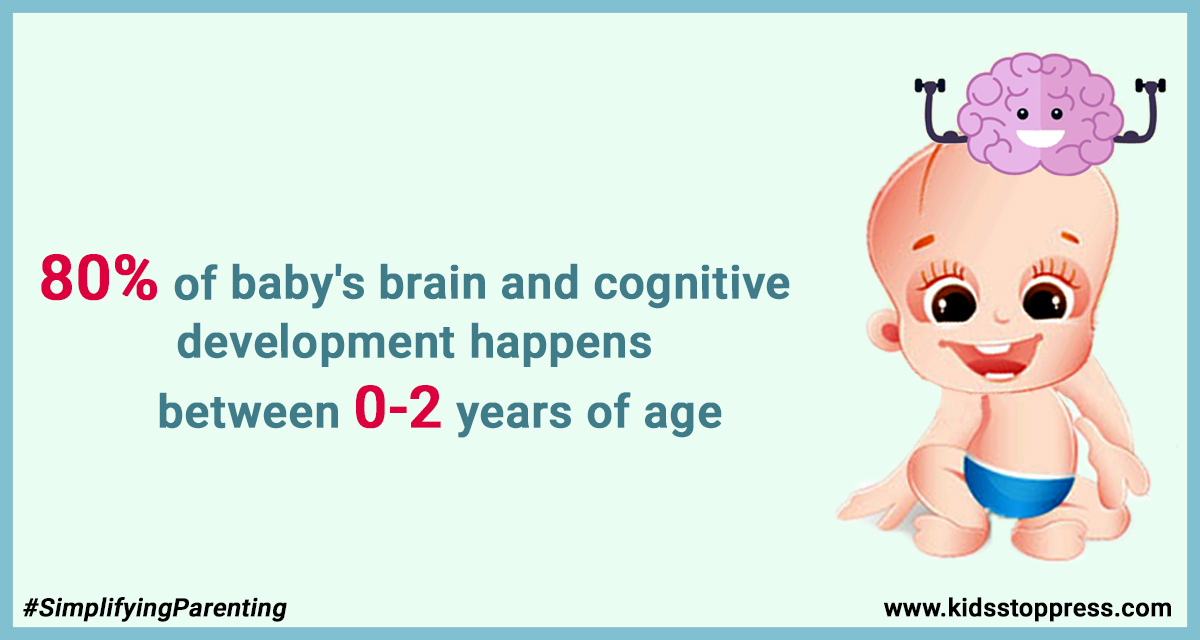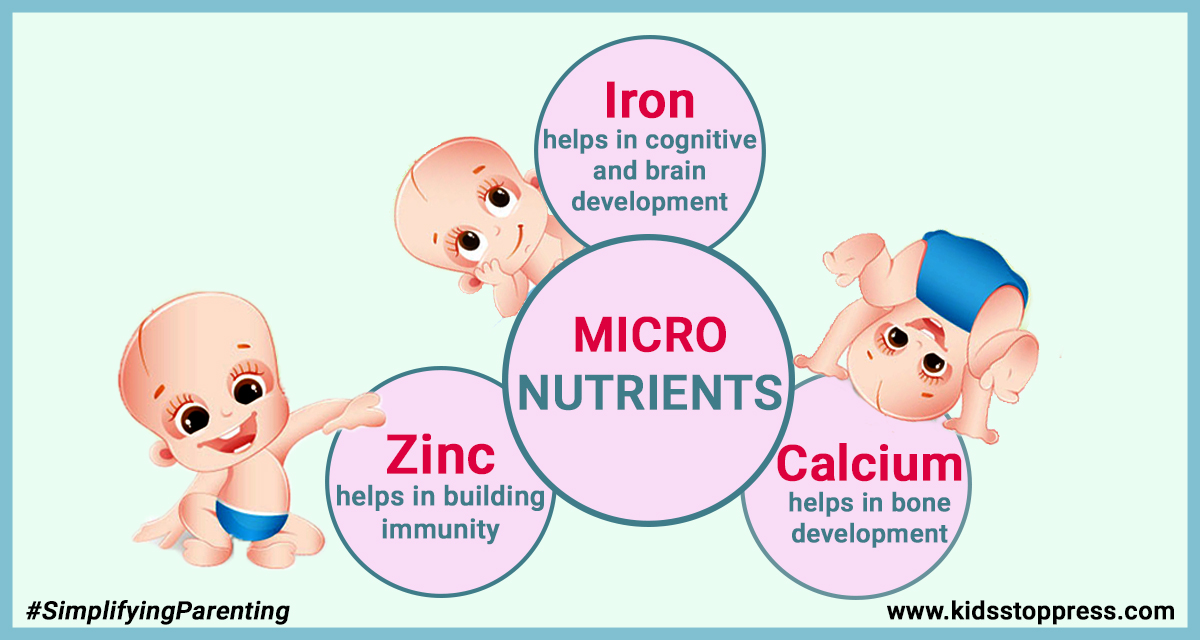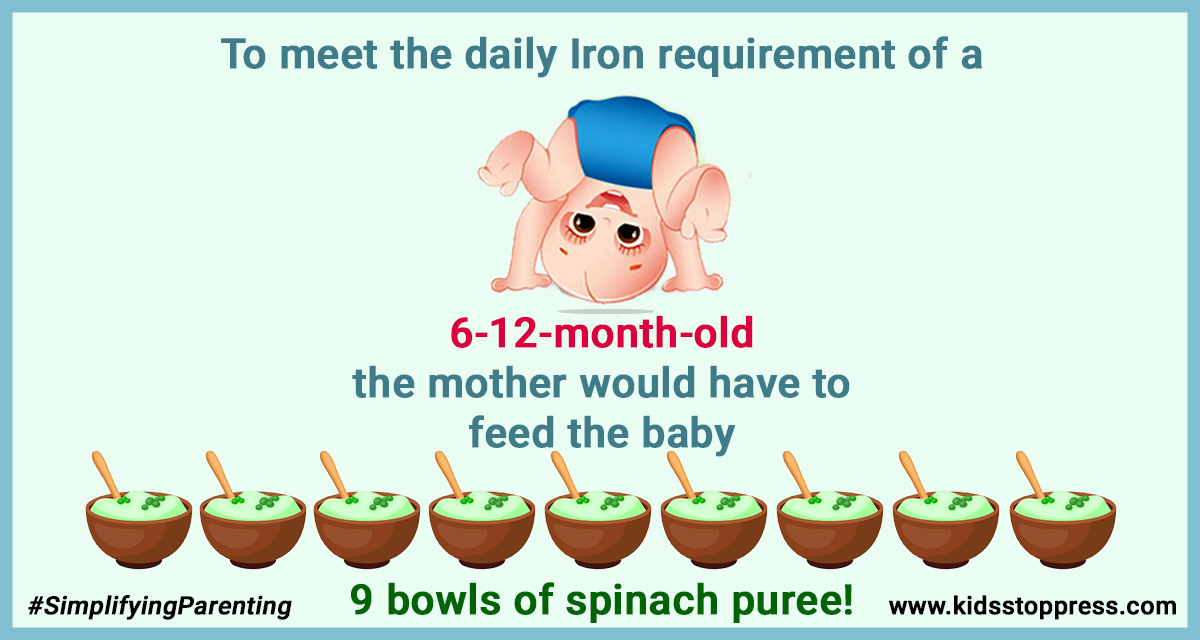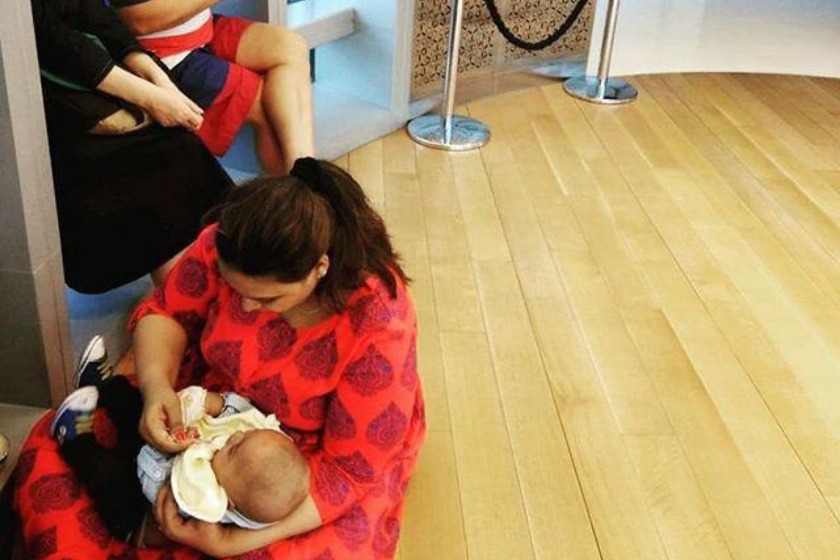You have carried your baby for nine months and have a beautiful baby in your arms. All the guidebooks tell you what to do up until you have the baby in your arms, but once you bring your precious little bundle of joy home…now what? You start breastfeeding and all moms know being a new mother comes with its own share of fog and baggage. We have all asked ourselves this question at least once – Am I feeding my baby enough? Is my baby having enough milk? While you can rest assured when your baby is being fed breastmilk what happens when your baby turns 6 months old and you need to supplement breastmilk with solid food?
You may also like: Are You Feeding Your Child A Balanced Diet? Find Out!
Here are 5 myths and 5 facts every mom must know about feeding their baby:
1.Baby's Brain Development
Every mom waits until baby starts going to school to really focus on brain building. That's when the bhindi and walnuts and badam actually make a grand appearance in the food.
But the first two years are crucial for brain development as 80% of the child’s brain and cognitive development is complete by their second birthday.
In the initial years, the brain works on developing the sensory and motor functions which are very important for milestones. This is the way we map how a child learns, interacts, and behaves with the world around him. with their brain size tripling from birth to two years!
The Truth:
A healthy diet that is rich in micronutrients such as calcium, zinc and iron promotes the proper growth and development of your baby. If either of these nutrients is lacking in quantity, it can have a negative impact on the overall growth and development of the baby resulting in long-term consequences such as not reaching their potential height and weight, low IQ, etc.
You may also like: What Is Hidden Hunger And How To Make Sure Your Kids Don't Have It
2. The right portions to feed:
As moms, we think feeding baby a heavy meal will get them to sleep well. Unfortunately, moms don't really know just how small their baby's tummy is!
Babies tummies are almost 5 times smaller than adults while at the same time, their nutritional needs are much higher than an adult. Their nutritional requirement is 2-5 times greater than adults!
So that means, while you need to feed your child less, it has to be nutritionally dense.
The Truth:
3. Micronutrients and macronutrients
When we talk about macronutrients and micronutrients what are we referring to? Macronutrients are nutrients that provide calories and energy. They are 'macro' meaning large because we need them in large quantities for growth and metabolic functions. Macronutrients would be – proteins, carbohydrates and fats.
Micronutrients on the other hand – also known as vitamins and minerals – are essential components of your baby's diet and have a huge impact on their health.
While they are only required in tiny quantities (hence micro), micronutrients are the essential building blocks of your child's overall development and metabolic processes.
Deficiency in micronutrients will have a lifelong impact on their physical and mental health. Make micronutrients an essential part of your child’s diet by including it in a variety of food items that complement their main meal. For example, you could serve them sweet potato fries along with their cheese sandwiches
4. The biggest component of the meal
The biggest component of the meal should NOT only be carbs and protein but should also have micronutrients. The secret to getting them into your little one’s diet: Feed him/her the rainbow! Carrots and sweet potatoes are loaded with vitamin A; green veggies, bananas and beans are packed with B vitamins; tomatoes, strawberries are full of C; and cereal and grains are rich in E.
5. Adding greens to your child's meal is not enough
An Indian diet comprises mainly of grains and what Indian mothers usually do is simply add the leafy greens to their child’s khichadi. Studies show that is simply not enough nutrition for your baby. So what should a mom do? To bridge the gap between a drop in micronutrient delivery especially when you are introducing solids to the baby, parents must ensure their child gets fortified with vitamins, iron and minerals should be offered as finger foods. For example, offer your child beetroot chunks or you could add date and nut balls as part of his oatmeal.
So when you make a meal plan for your baby, make sure it's balanced and you have included macronutrients and micronutrients in proper proportion so that he/she can reap the maximum nutritional benefits from the meals.
This post is written in association with Nestle Start Healthy Stay Healthy.
Don’t forget to follow us on Facebook, Twitter, Pinterest, Soundcloud & Instagram or subscribe to our YoutubeChannel for more information


























